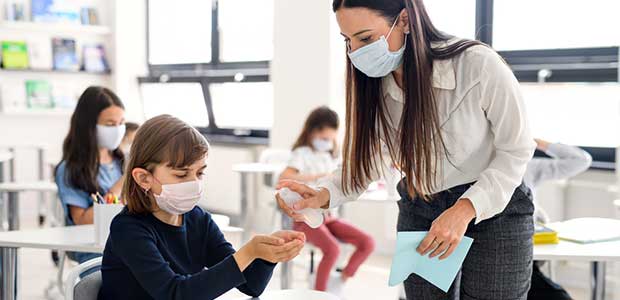
Are Teachers Considered Essential Workers? Many Argue Yes
As fall quickly approaches and schools consider reopening, many wonder if teachers can be considered essential, front-line workers. Traditionally, teachers have not been considered “essential,” but that might be changing.
Teachers are essential—they are the backbone of society’s education and ultimate success. Since the start of this pandemic, teachers have not been legally considered as “essential workers” like healthcare workers, construction workers or pharmacy employees.
Essential workers basically people who are considered essential by government officials to maintain public health and safety and keep critical infrastructure operations working when parts of the economy have been shut down, according to one article by the Washington Post.
Other countries, like Britain, did consider teachers and social workers to be essential, and when schools shut down because of the pandemic, some schools remained open for vulnerable students and for children whose parents had essential jobs.
This was not the case in the United States.
According to the National Conference of State Legislatures (NCSL), “essential” sectors (according to federal and/or state guidelines) include energy; child care; water and wastewater; agriculture and food production; critical retail, such as grocery stores, hardware stores and mechanics; critical trades, such as construction workers, electricians, plumbers, etc.; transportation; and some social service organizations. While at least 28 states labeled child-care providers as essential workers, teachers were not, according to the NCSL.
Part of that decision included a broader fear of coronavirus outbreaks in schools, and many U.S. governments did not want any possibility of the virus spreading across schools. Now that summer is coming to an end, officials are discussing if they can reopen schools and do so safely.
This means, though, that teachers would be considered “essential” as they are asked to go back to work and not given the opportunity to work from home.
The (very quick) decision to do online learning this spring might have worked for some, but many students (especially those with limited internet access, disabilities or those learning English as a second or third language) struggled greatly and could not receive an adequate education.
Many are worried that online learning in the fall could be even more detrimental to students’ progress, but many others are also concerned about the health risks that will come with reopening schools at full capacity.
If teachers are asked to return to work in the fall, many are arguing that they should be given the same protections and considerations as other essential, front-line workers. However, according to a report on essential workers by the Economic Policy Institute (EPI), a nonprofit Washington-based think tank, many essential workers are not receiving basic health and safety measures, and some are dying as a result.
EPI provides a few notable facts about essential workers:
- Women make up the majority of essential workers in health care (76 percent) and government and community-based services (73 percent).
- Men make up the majority of essential workers in the energy sector (96 percent), water and wastewater management (91 percent) and critical manufacturing (88 percent).
- People of color make up the majority of essential workers in industrial, commercial, residential facilities and services (53 percent).
- Nearly 70 percent of essential workers do not have a college degree. Three in 10 essential workers have some college (30 percent) or a high school diploma (29 percent). One in 10 have less than a high school diploma.
As schools discuss reopening, many have questions such as: How will schools protect children and teachers from the virus? What equipment and procedures need to be in place to make schools safe, and who will pay for these?
Keeping schools closed indefinetly is not an option. Students—particularly younger children—absolutely rely on in-person instruction for cognitive, social and educational development. Online learning for young kids makes it very difficult for them to stay engaged and retain information.
The article explains that “A hybrid in-person/virtual model, which many education systems are considering, has severe limitations in the poorest countries where only 1 in 7 people have access to the Internet and up to 1 billion people live without electricity.”
Because education is so crucial, teachers—if considered “essential”— arguably should be eligible for priority access to COVID-19 testing, PPE and, eventually, a vaccine. The need for PPE, disinfectant and other protective measures is even more crucial in poorer districts and disadvantaged areas where online learning is really not an option.
Schools could also consider allowing teachers at high risk of infection—with preexisting health conditions, for example—to teach remotely.
Educational International has identified five essential areas that governments need to focus on to ensure a safe transition back to on-site education and to mitigate the impact of prolonged closures on students and educators.
It is also important to remember that no one wants to be back in school as much as teachers. Their lives, and their livelihoods, are committed to helping students learn and succeed. Many want to return to work safely, though, and the coronavirus has made their job that much riskier in a classroom.
Five months into this pandemic, it might be time to rethink how we determine “essential workers” and how we help them.